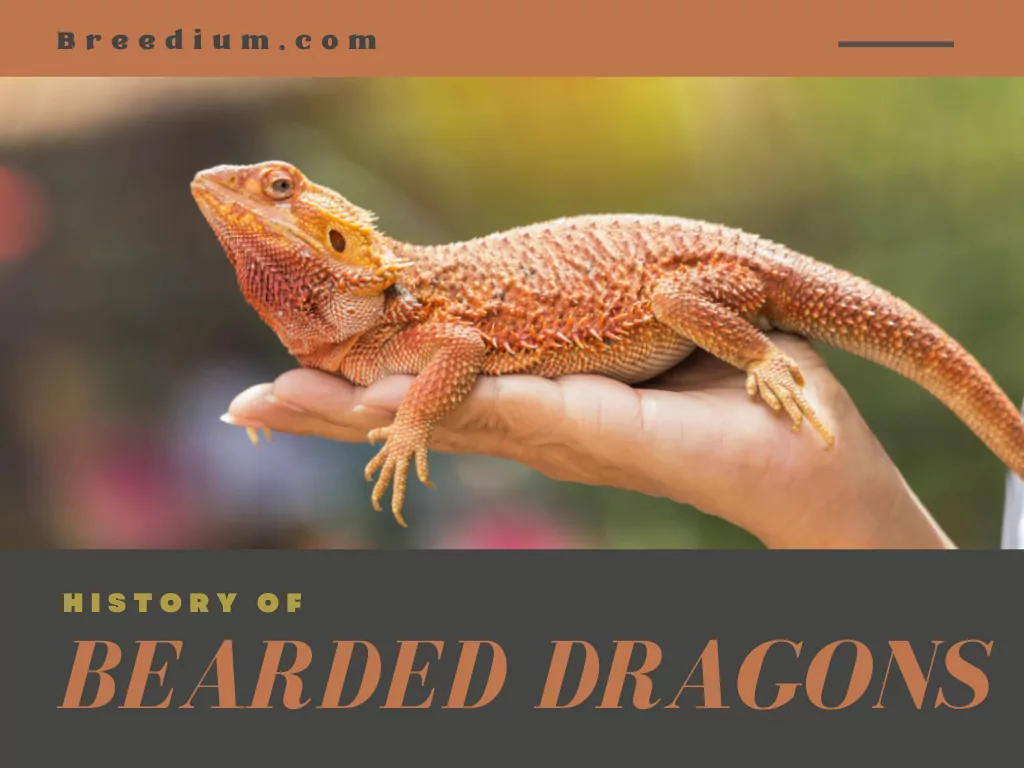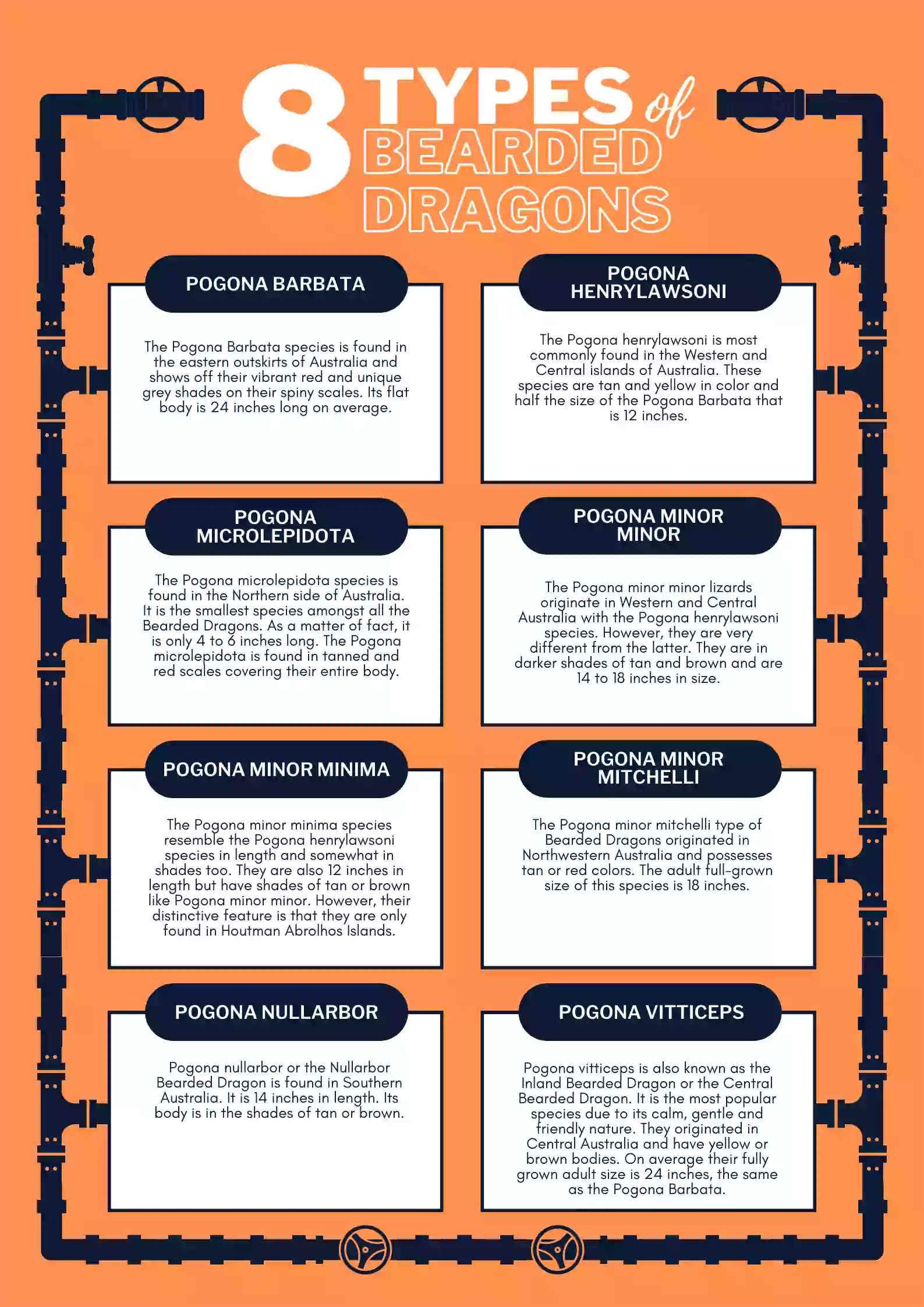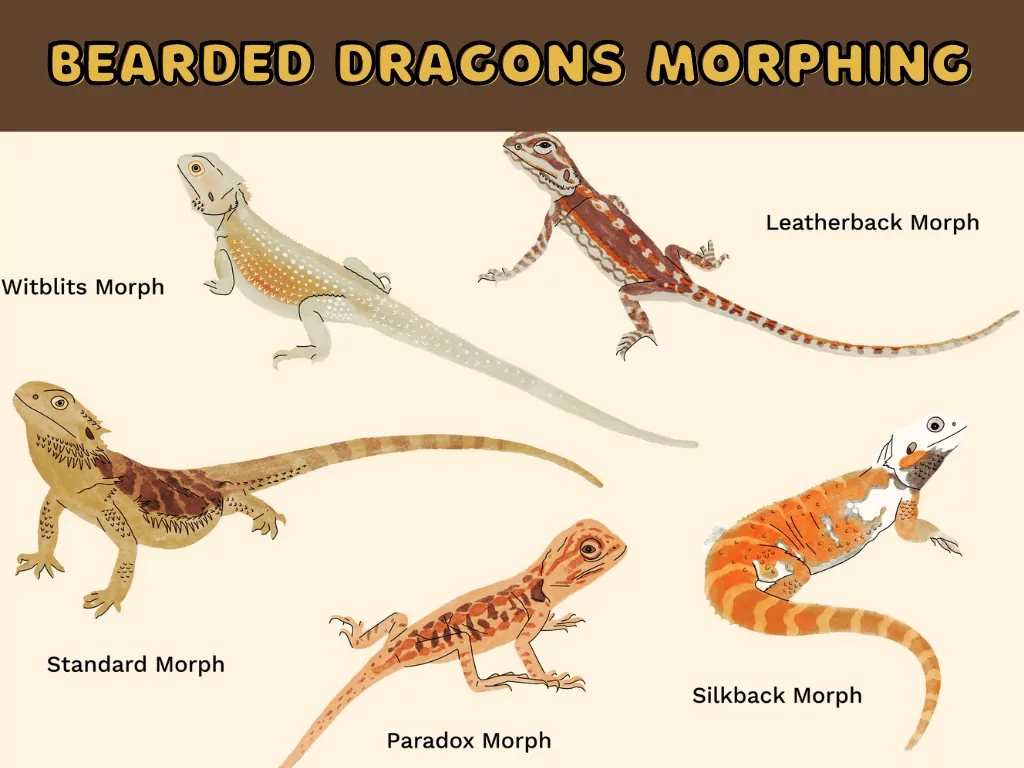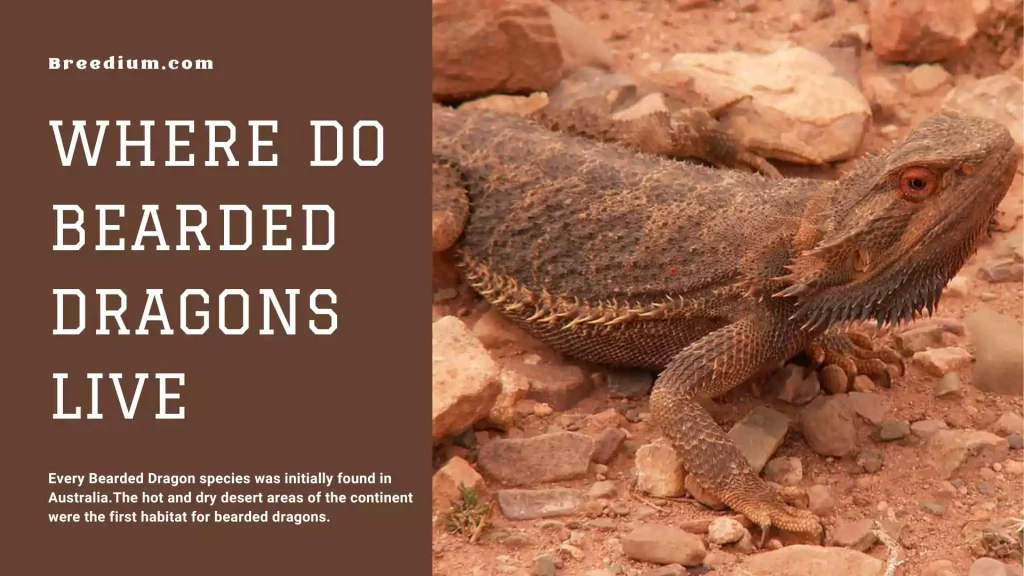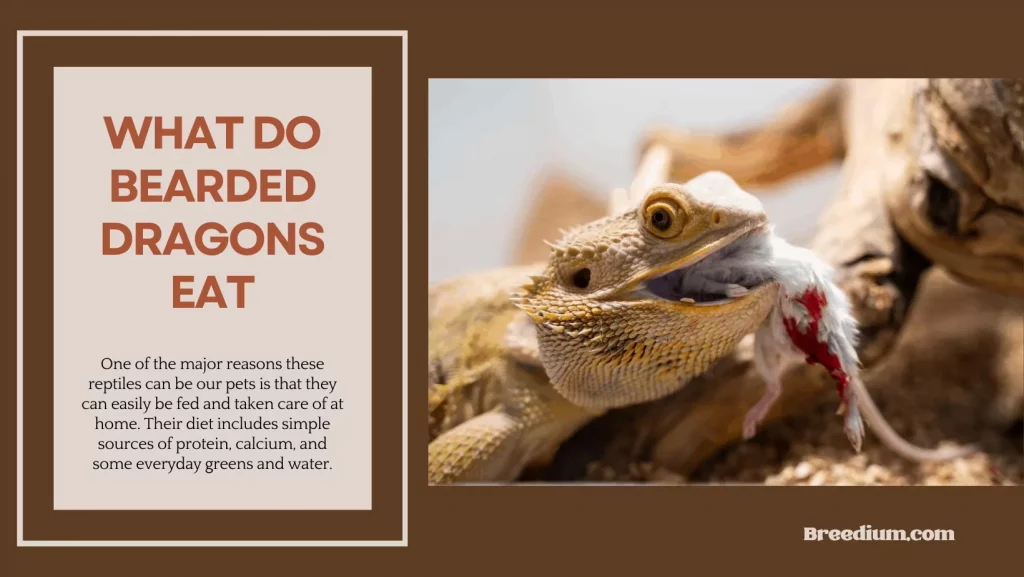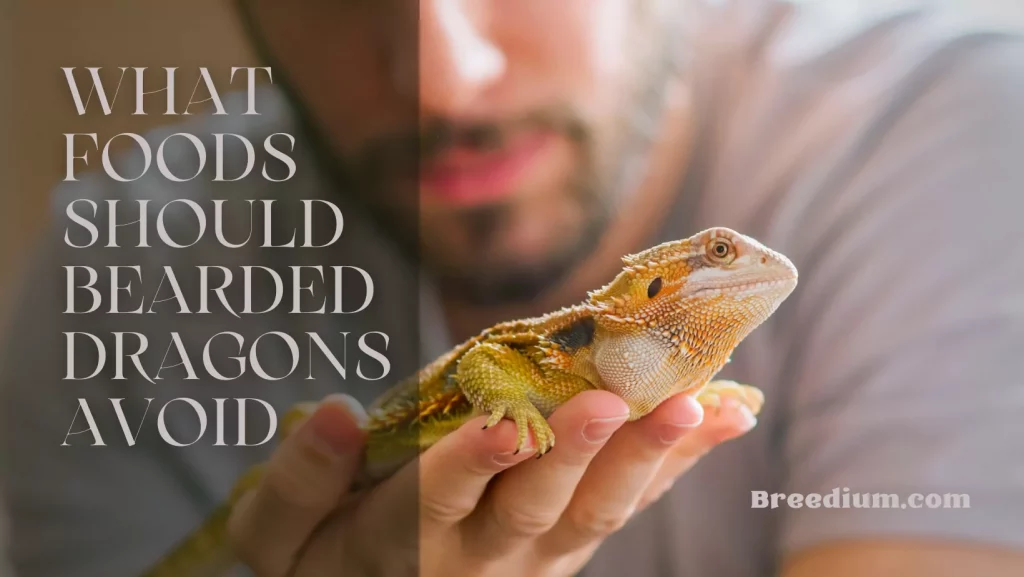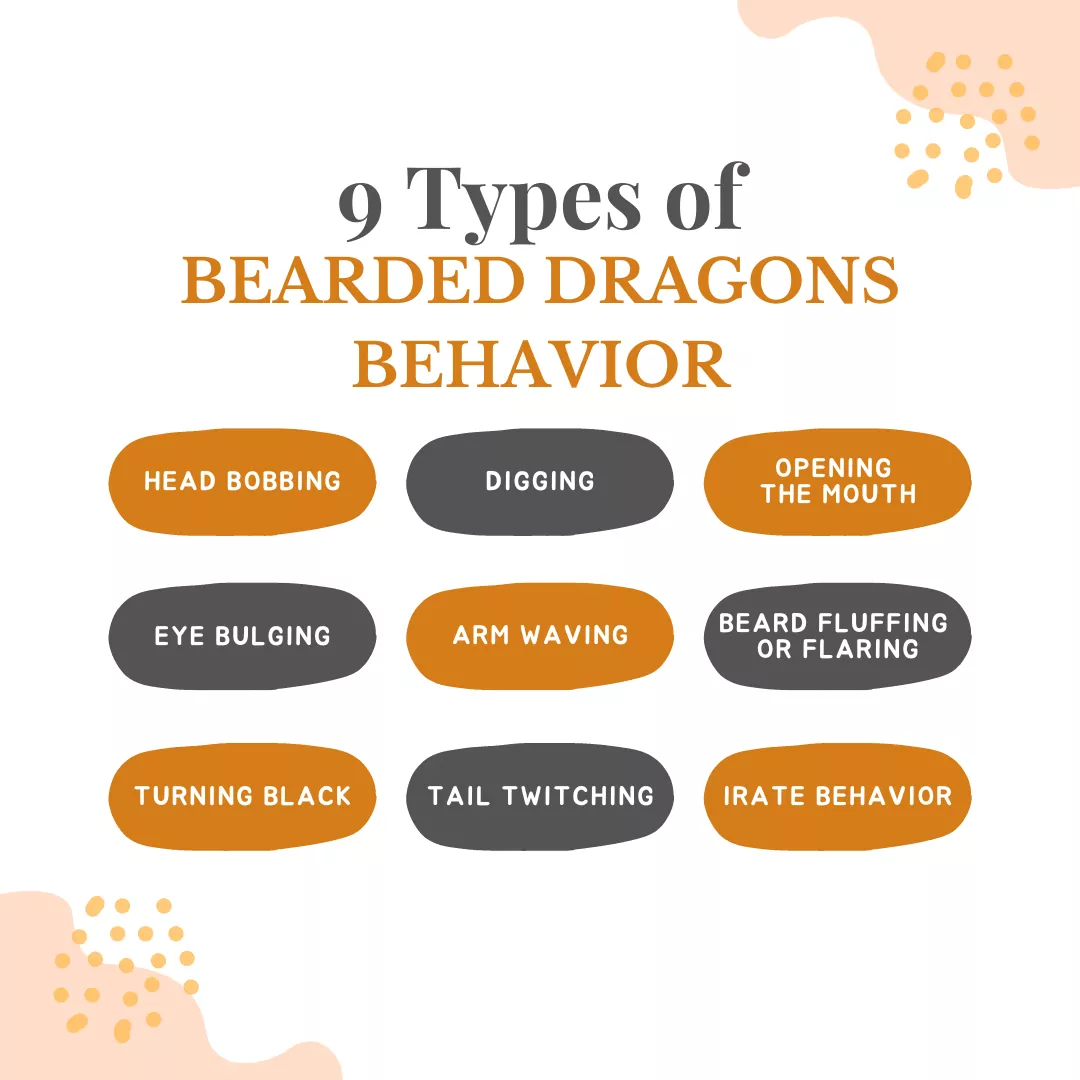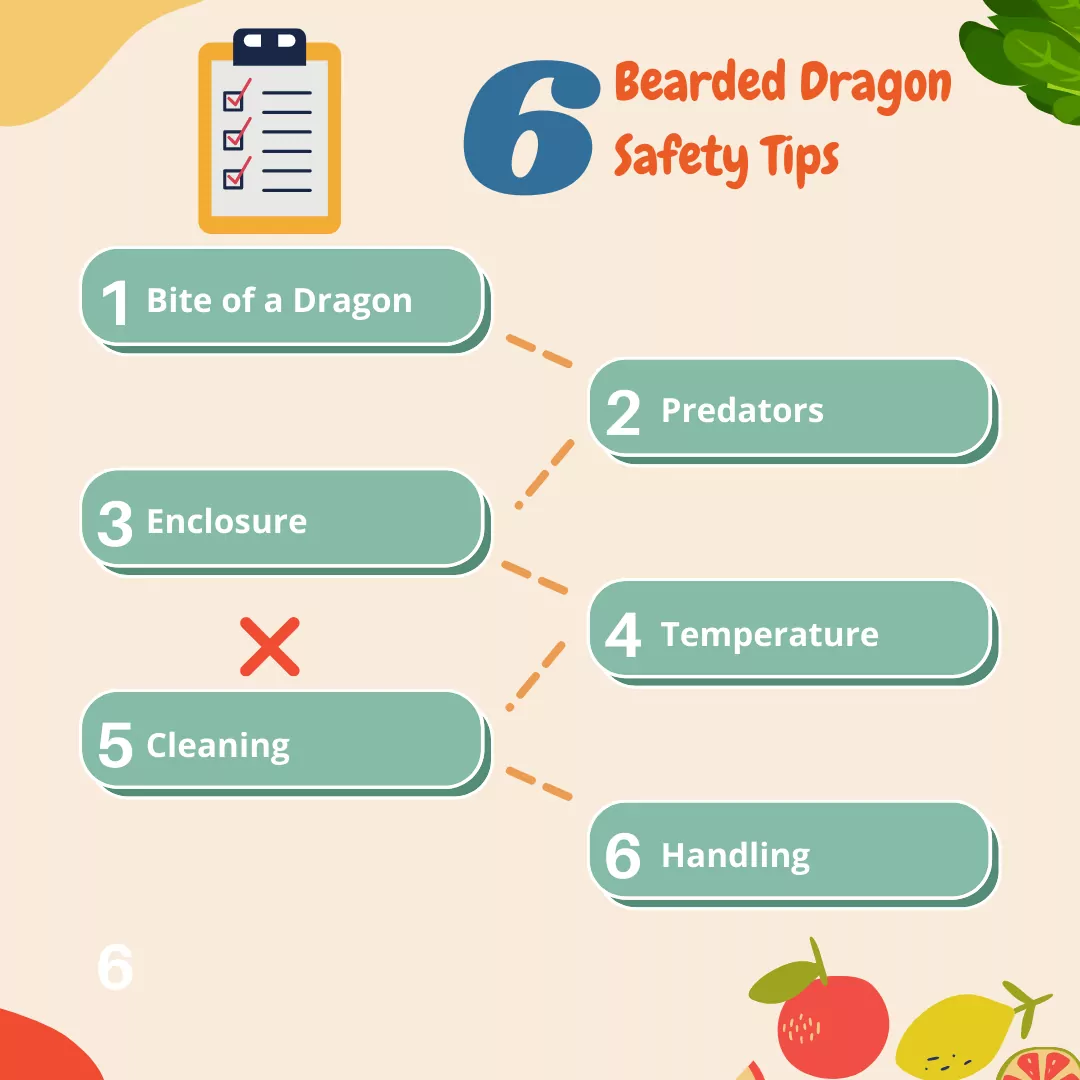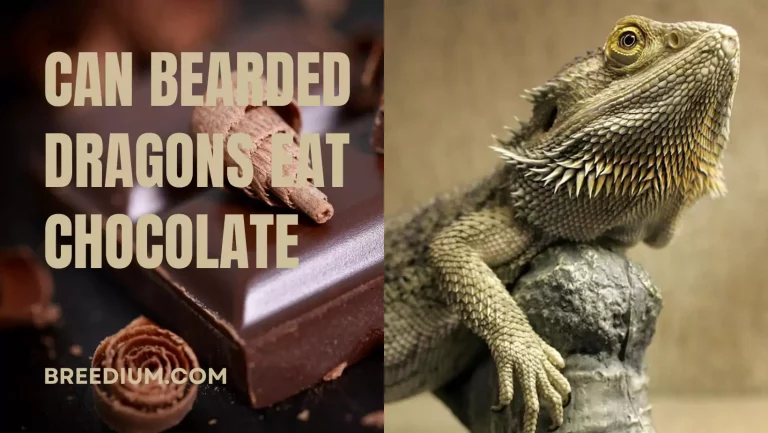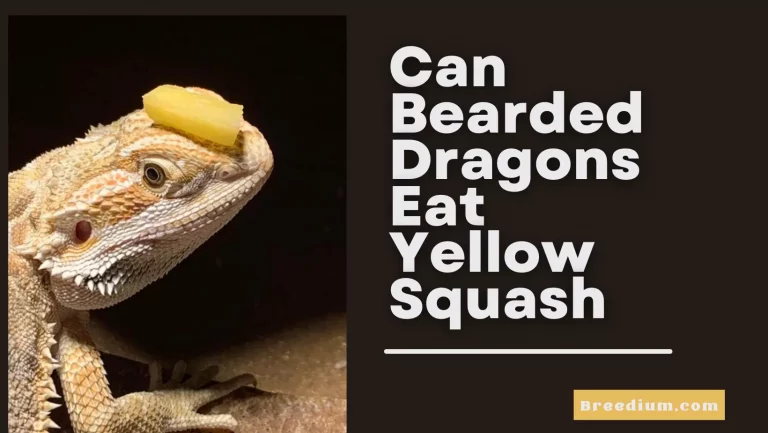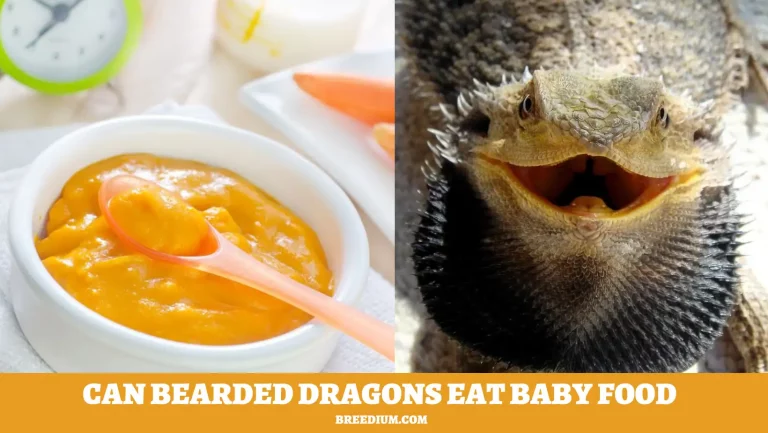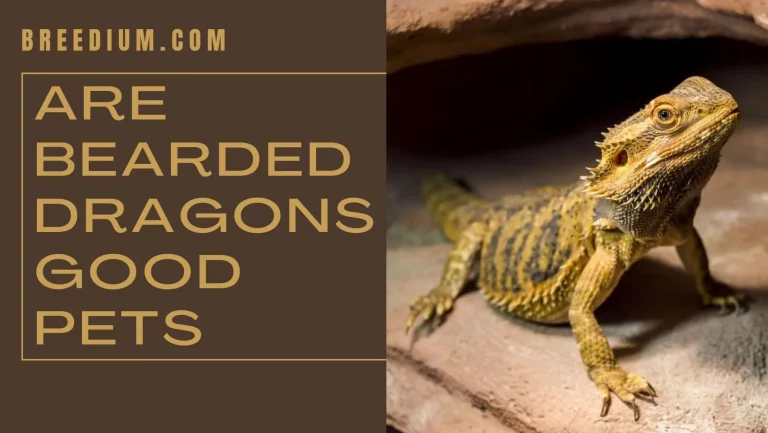Bearded Dragons 101 – A Comprehensive Guide 2024
Bearded Dragons belong to the reptile class and are biologically named Pogona. These popular lizards are natives of Australia and therefore spotted only in warm and arid areas. Bearded Dragons are gentle creatures and are kept as pets by many animal lovers, and so many of us also refer to them as Beardies.
Although they have the same scaly skin as most reptiles, the distinctive species are loved for their uniqueness in appearance due to the underside of their throat which has little spikes growing out like a beard. A very amazing feature of these spikes is that they turn black and puff out from the throat when the creature is intimidated or stressed.
These majestic creatures have flat bodies, natural dull shades of green, yellow, and red, triangular heads, and pointed scales all over their body from the head to the tip of the tail. In addition, the male species can grow to be 24 inches long while the females can be up to 20 inches.
These exotic lizards have quite a few species under the Pogona genus, and each of them is friendly and can be tamed down to be kept with humans. However, originally these semi-arboreal creatures are found bathing on rocks and branches in hotter habitats.
Out of all the reptilians, the bearded dragon is most favorable for petting. People like these harmless and interesting lizards that are exotic and add to the home in many ways. If you have landed on this page, you must be considering keeping a bearded dragon as a pet, and there is all the information you need about your new roommate!
History Of Bearded Dragons
The history of bearded dragons is nothing strange or tragic! These reptilians are mostly found in Australia and live in arid, semi-desert zones. Somewhere in the 1900s, travelers from Australia brought these dragons to the United States and since then, they have become pets and you can even find them at zoos and animal sanctuaries.
250 million years ago, the Pogona lizards evolved from the common Reptilian trunk. These dragons can climb trees, and chew on leaves in the open. However, they usually appear during the day and do not roam about at night. Reptilians are often associated with nocturnal life, but in reality, they do not like dark and uncertain environments. All reptiles are cold-blooded, which means they are morning creatures. They move when the sun is out and as soon as it gets dark they feel lazy.
Bearded dragons are semi-arboreal and therefore also found climbing on branches and bushes in open woodlands. But you will only see them out in the day, as they dig into underground burrows during the cold nights. According to researchers, Bearded Dragons are very social animals and can be easily taken care of by humans with active training. These curious species stick their tongue out to explore and interact with their surroundings.
What Are The Types Of Bearded Dragons
There are only 8 species of Bearded Dragons. All these species originate from Australia and differ in appearance. However, only 4 out of 8 of these Pogona species can be kept and tamed as pets. The most popular of which is Pogona vitticeps. The eight distinctive Pogona species slightly differ in habitat and greatly differ in shades, sizes, and behaviors.
Pogona Barbata
The Pogona Barbata species is found in the eastern outskirts of Australia and shows off its vibrant red and unique grey shades on its spiny scales. Its flat body is 24 inches long on average.
Pogona Henrylawsoni
The Pogona henrylawsoni is most commonly found in the Western and Central islands of Australia. These species are tan and yellow in color and half the size of the Pogona Barbata which is 12 inches.
Pogona Microlepidota
The Pogona microlepidota species is found in the Northern side of Australia. It is the smallest species among all Bearded Dragons. As a matter of fact, it is only 4 to 6 inches long. The Pogona microlepidota is found in tanned and red scales covering their entire body.
Pogona Minor Minor
The Pogona minor minor lizards originate in Western and Central Australia with the Pogona henrylawsoni species. However, they are very different from the latter. They are in darker shades of tan and brown and are 14 to 18 inches in size.
Pogona Minor Minima
The Pogona minor minima species resemble the Pogona henrylawsoni species in length and somewhat in shades too. They are also 12 inches in length but have shades of tan or brown like Pogona minor minor. However, their distinctive feature is that they are only found in Houtman Abrolhos Islands.
Pogona Minor Mitchelli
The Pogona minor mitchelli type of Bearded Dragons originated in Northwestern Australia and possesses tan or red colors. The adult full-grown size of this species is 18 inches.
Pogona Nullarbor
Pogona nullarbor or the Nullarbor Bearded Dragon is found in Southern Australia. It is 14 inches in length. Its body is in shades of tan or brown.
Pogona Vitticeps
Pogona vitticeps is also known as the Inland Bearded Dragon or the Central Bearded Dragon. It is the most popular species due to its calm, gentle and friendly nature. They originated in Central Australia and have yellow or brown bodies. On average their fully grown adult size is 24 inches, the same as the Pogona Barbata.
Here Is A Summary Of The 8 Types Of Bearded Dragons
| Species | Size (inches) | Colour/Shade | Location/Areas |
| Pogona barbata | 24 | Gray or red | Eastern Australia |
| Pogona henrylawsoni | 12 | Tan or yellow | Western & Central Australia |
| Pogona microlepidota | 4 to 6 | Tan or red | Northern Australia |
| Pogona minor | 14 to 18 | Tan or brown | Western & Central Australia |
| Pogona minor minima | 12 | Tan or brown | Houtman Abrolhos Islands |
| Pogona minor mitchelli | 18 | Tan or red | North-western Australia |
| Pogona nullarbor | 14 | Tan or brown | Southern Australia |
| Pogona vitticeps | 24 | Yellow or red | Central Australia |
What Is A Bearded Dragon Morphing
Interestingly, you may find more than 8 different types of Bearded Dragons on the web, and in other research books, these can be listed as 15 different types of Bearded Dragons or 20 types of Bearded Dragons, or even more on some sites. You may feel that the information about bearded dragons varies in different places.
Some sources talk about more species, and some say there are a limited number of variations. The reality is that many of the species listed here and there are not root species but are morphed, or evolved breeds. These Bearded Dragons are selectively bred to get the desired characteristics such as colors, size, and behavior.
However, the process of morph breeding is costly and their prices are according to their unique colors and behaviors. Mainly morphs are divided on the basis of three characteristics, these are:
- Scalation
- Color
- Pattern
These three characteristics are the main differentiating features and if you want to specify further, you can count the length of the tail, third eye feature, and many other physical factors. However, when it comes to morphing breeding, the three factors mentioned above are taken into account.
The color of bearded dragons is inherited by the parent dragons. If the two species breeding a new one have lighter skin and a transparent thickness, the offspring will possess the same type of skin, with a higher degree. A more translucent skin and a lighter shade are going to be the obvious outcome. Similarly, the scales and patterns of the bearded dragons heighten as the offspring inherit the characteristics in higher intensity.
Where Do Bearded Dragons Live
Every Bearded Dragon species was initially found in Australia. The hot and dry desert areas of the continent were the first habitat for bearded dragons. Now that you can find a dragon anywhere in the world, the most suitable place will have to be an arid and desert-like place where there is minimal rain, dust storms, and scorching heat. In addition, these lizards are found in woodlands that are arid or subtropical. Depending upon the different kinds of species, these lizards are spotted in the range of eastern, southern, and western territories of Australia.
You can easily spot the Eastern Bearded Dragon in New South Wales, Victoria, Queensland, and South Australia. Whereas the Dwarf Bearded Dragons or the Pogona minor minima is widely distributed across Western Australia, the western side of South Australia, and also Southwest of Northern Australia.
Moreover, bearded dragons can be bred in hot interior deserts, shore areas, and savannahs since they are adapted to climb on high branches in semi-arboreal locations. These exotic reptiles are also often seen basking on rocks, boulders, tree stumps, and bushes. However, these creatures are nowhere found in agricultural or cooler areas. Interestingly, some species of bearded dragons are now also found in urbanized areas. Hence, if a favorable environment is set, these calm species can easily be kept as pets.
If you plan to pet a bearded dragon, the kind of environment they need is obviously going to be similar. If you want your new pet to thrive, look for a dry bed with sand, or create a habitat where they can frolick in the dusty beds, cactus plantation, and higher temperature than the pleasant, and cool living space that you enjoy. Many pet owners set up a tank with sand, a light bulb, and some ambiance-creating props. The more comfortable your bearded dragon is, the more it will thrive within an indoor setup!
What Do Bearded Dragons Eat
One of the major reasons these reptiles can be our pets is that they can easily be fed and taken care of at home. Their diet includes simple sources of protein, calcium, and some everyday greens and water.
To begin with, the most nutritious meal for these exotic lizards is worms. The Pogona eats worms to meet their protein needs. These may include mealworms, king worms, and waxworms. Plus, they can also be fed crickets and cockroaches. These insects are rich in vitamins and nutrients for beardies.
Next, bearded dragons eat fruits for their calcium and other nutritious requirements. These include figs, apples, mangoes, dates, plums, and some berries too. However, not every beardie may have the same cravings, you can try feeding them one fruit at a time and figure out what suits them the best.
Furthermore, these reptiles can ingest a large variety of vegetables including peas, sweet beans, sweet potatoes, orcas, cabbage, asparagus, parsnip, yellow squash, and acorn squash. There are also many greens on the list including parsley, coriander, clover, turnip greens, mustard greens, and collards. Speaking of greens, there are also some weeds that these reptiles can eat, such as Dandelion, Cat sear, Plantain, and Dead Nettle.
Summing this up, you can understand what is good for your bearded dragon, and what is not. The reptilian pet requires less water since its metabolism is slow. Moreover, these dragons require calcium and minerals during infancy so their bones can grow. Dairy is not good for bearded dragons at all, therefore, if you have a baby dragon, you will have to feed it calcium and minerals in a liquid, which is not milk. Gradually as they grow, they will need protein and that comes from green vegetables and insects.
Since bearded dragons have a slow metabolism, everything that has fat or has high carbohydrate content will not be suitable for them. Apart from dairy, fats, and sugars, all the vegetables and fruits that have a high water content can be given to these dragons in a limited amount, or occasionally. The forbidden fruits and vegetables are easy to mark, and we have already mentioned the suitable ones before this.
What Foods Should Bearded Dragons Avoid
There are quite a few foods that the beardies can’t eat at all and these are onion, chives, lemon, mushroom, celery, iceberg lettuce, avocados, rhubarb, and orange. However, there are some foods on the list that should not be fed to your pet lizards. First on the list are wild insects. Wild insects have been too toxic places and may have parasites inside them, feeding these to your pet might get him sick. Moreover, you should avoid feeding fireflies too, as glowing insects contain chemicals that can kill reptiles.
Vegetables to avoid are spinach and beet tops. These vegetables contain chemicals that cause calcium deficiency in reptiles and also result in metabolic bone disease. However, these can be fed occasionally. Here you can understand why these vegetables might not be a good choice. However, if you steer clear of dairy and these vegetables, your bearded dragon will lead a healthy life and you will enjoy seeing them grow.
Some pet owners hear others say that bearded dragons are good ‘pesticides,’ but we do not agree. Continuing what was discussed above, the dragon pet is not your way of finishing off all insects from around the house! These sensitive creatures need good protein and insects are meat for them. However, all insects are not fit for your dragon’s palate. Many people often ask about the insects that are good for bearded dragons, and the simple answer is roaches, worms, and insects that are not considered poisonous.
Bearded Dragons Lifespan
In the wild, bearded dragons face some intense conditions. They need to find and chase their own food, fight for survival, and stay away from the many hazards of life in the wild. Accordingly, they have pretty short futures. For the normal bearded dragon in the wild, life endures only 3-8 years. Dragons that arrive at the age of eight have extraordinarily long lives, as most will die at the age of five or six.
Obviously, things are very unique for bearded dragons as a pet. The existence of a homegrown bearded dragon is really laid-back. Food is conveyed to your home every day and nothing at any point attempts to eat you. In such a way, a homegrown bearded dragon can anticipate a significantly longer life expectancy. By and large, bearded dragons living indoors in a protected environment have life expectancies of eight to fifteen years.
Like all living creatures, life expectancy is based on health and numerous other factors such as good diet, mental health, and physical endurance. If you ensure that your bearded dragon pet is getting the right nutrition, supplements to avoid deficiencies and a good lifestyle, then they will live longer than other dragons.
Any pet has a higher life expectancy since they are fed, cared for, and treated well in homes. Bearded dragons do not have to live in the wilderness with the constant fear of getting attacked. These pets hardly have a worry in the world! Therefore, you see them thriving. If you wanted a bearded dragon pet, this statement can be a good determinant as you will not get attached to the dragon for a few years only. Your new pet can live up to fifteen years, which is longer than most mammals surviving in a protected environment!
Bearded Dragons Behavior
Bearded dragons are very interesting lizards. Their behavior intrigues us human beings due to their amazing interpretations. Their unique behavior includes gestures, limb movements, and color changes too. Here are some distinctive behaviors with their interpretations.
Head Bobbing
The Pogona bobs its head or nods it up and down quickly to show dominance over others. It may bob its head while countering a female pogona to show its power to gain her interest in courtship. On the other hand, a bearded dragon may also bob its head vigorously when it encounters a rival bearded dragon and wants to mark its territory.
As your pet dragon spends more time with you, it will be clear that it is not trying to answer you in the affirmative when it nods, but is trying to tell you that it dominates the territory! Furthermore, nodding the head can be a sign of superiority or pride for these reptilians. Interact more with your dragon and you will see what else it can do!
Digging
These lizards are found to be digging in the ground when they are preparing for the process of laying eggs, searching for food, looking for more space, or are scared or under stress. Another essential cause of diffing is brumation. Brumation is a type of hibernation for reptiles when they sleep and continue to eat and drink less.
Opening The mouth
Reptiles do not have a sweating mechanism like human beings. They have a different cooling mechanism. Therefore, the beardies cool their bodies by opening their mouths. If you see your beardie opening its mouth or gaping, it means it feels hot and needs to be in a slightly cooler environment.
Eye Bulging
It is completely natural for reptiles to bulge their eyes during the process of shedding. The bearded dragons bulge their eyes so that the skin easily sheds around the face since it is the most difficult area for skin shedding.
Arm Waving
Bearded Dragons wave their arms to show submissiveness. This behavior is more commonly found in calm and more gentle beardies. When a dominant and a submissive bearded dragon encounter each other, the dominant one bobs its head and the submissive one waves its arm gently. This friendly gesture is often shown by bearded dragons when they are fed by their owners.
Beard Fluffing Or Flaring
The underside of the throats of the Pogona species turns black and puffs when they feel threatened. This is called Beard fluffing. As a matter of fact, this is a defense mechanism for these creatures when they sense a threat or are uncomfortable. It is very common and beardies are often seen puffing inside their glass enclosures. Moreover, these creatures may also puff their beards when they are shedding their skin as it makes them uncomfortable too.
Turning Black
These lizards change their color to black due to a number of reasons. They turn black when they are ill due to any reason. This indication is very useful for owners and is a red flag for them so that they treat their pets as soon as possible. Next, they turn black when they feel threatened by a predator, another bearded dragon, or any new human face. In addition, they might also transform color when they want to initiate courtship or breed, however, it is more common in males than in females.
Tail Twitching
It is very common to see our beardies twitch their tails in their enclosures. They often do that when they are hungry or searching for food. However, they might also do this under stress. More importantly, a different kind of tail twitching is seen when a bearded dragon has a metabolic bone disease. In this case, the creature has muscle spasms and its tail is twitching due to the spasm. Take your beardie to a specialist as soon as possible.
Irate Behavior
Bearded dragons are usually the most subtle, and cool-headed creatures. However, there are times when they might quickly scurry off, or not allow you to sit next to them. These sensitive creatures also forget to eat for days, if they are irritated. So what causes irritation or disturbance in their daily lives?
More than often you will see your bearded dragon react to a fly, or a falling cushion, or even if you move your hand from above them to reach for something on the table on the other side! The bearded dragon will instantly become irate as their third eye senses that some ‘intrusion’ or dangerous object tried to approach them from behind. Similarly, if you switch on a light in the middle of the night, or if you carry the dragon to a cold place or a hot place, they get irritable.
Pet owners must keep in mind that these reptilians are slow to accept changes and their cold blood does not allow them to quickly adjust to a change in the atmosphere. Always try to keep things consistent around your bearded dragon, and they will love it!
The Essential Third Eye Of The Bearded Dragon
One very important, and often misunderstood physical feature of the bearded dragon is the third eye. No, it is not an eye that sees, but it does sense everything that goes around the dragon. This third eye is a sensor or a radar that looks like an eye and is located between the two eyes, at the crown of the head.
Bearded dragons are exotic creatures and this third eye feature gives them an almost fairy-tale status as numerous pet owners and potential petters ask about this eye. Reptilians sense with this third eye and while it looks like an eye, it has a retina and lens, but there is no iris! This feature of these reptilians makes them more popular among young pet owners and all the people who want to own exotic pets with strange, and unique features!
This third eye must be cared for in special ways and we have discussed a few factors above. However, one thing you must ensure is that this radar of the bearded dragon must not detect something that is out of the ordinary. For example, if it is dark at night, a sudden flash of light, a loud noise, or even a change in temperature can put them off.
Furthermore, these bearded dragons can sense if an object or creature approaches them from behind or above. Do not tet your pet’s sensitivity by playing a game of ball around it, or by exposing it to natural light after living in synthetic light for hours! Gradually introduce change to the bearded pet, and they will love it!
Bearded Dragon Safety Tips
Pogona or Bearded Dragons are not common pets, however, animal lovers who adore exotic species pet them. Therefore, there are some very crucial safety measures that should be taken care of while looking after a beardie.
Bite Of A Bearded Dragon
Your bearded dragon pet will never be a danger, especially for the family that it lives with! However, if it ever senses any danger, it will snap back and maybe bites you hard as a form of self-defense. Many times this happens if an individual approaches the dragon from behind or there is a swift movement above its head, which causes it to attack the ‘trespassing’ hand or finger!
Disinfect a scratch or wound given by a bearded dragon immediately. In case it swells or becomes red, please consult a doctor. In addition, never place your finger inside its mouth.
Predators
Keep your bearded dragon away from birds of prey, feral cats, and larger lizards. They feed on smaller bearded dragons and may harm your pet. Moreover, bearded dragons have a basic instinct when it comes to predators. They may become fierce towards the owner as they do not know how to behave. Additionally, the predators might not mean any harm but the bearded dragon’s senses move with their third eye, and that is when they begin to react! If you have a cat at home, or if a visitor brought their pet along, care for your bearded dragon by putting it in its tank, or by segregating the visitor’s pet from your dragon!
Enclosure
Make sure the enclosure you purchase for the species is made up of Timber or glass. It must have sufficient ventilation and a secure lock door. The sand inside the enclosure should be fine-grade desert sand. In addition, there should be 12 hours of light in the enclosure and 12 hours of darkness for a healthy 24-hour cycle for the pet. As we mentioned earlier, the bearded dragon is made for a natural habitat where there is sun and dryness. Moreover, the sunlight hours must be observed so that the dragon does not feel out of place.
Another factor that plays a role is the third eye, which senses light. Wherever you place your bearded dragon, remember to turn off the lights when it is dark to let your pet know that it is time to sleep. The third eye does not signal the brain and glands to secrete Melatonin until the lights are low at night.
Similarly, if there is sunlight for twelve hours, your pet will be able to tell the active hours from the resting hours. Do not disrupt the natural clock of your pet so that it can exhaust its energies on time, and become a more active dragon!
Temperature
Install a quality thermostat for accurate temperature monitoring. Don’t forget! Bearded Dragons are very temperature sensitive. You must not turn on the air conditioning with a direct blow toward the dragon. Moreover, do not carry your bearded dragon to a room where the temperature is drastically low or high. These cold-blooded reptilians need time to get used to the change!
Cleaning
Clean the enclosure with a reptile-safe disinfectant and check the bearded dragon daily for spots, skin shedding, feces, or other uneaten food that might be on its body. Also, change the drinking water daily. In addition, wash your own hands with antibacterial soap after handling your beardie.
Handling
Hold the lizard with utmost care and close to the body. Do not squeeze, fidget, or shift him to the other hand quickly. Make sure you are ready to handle the beardie before you pick it up. Pick the lizard very slowly and gently, remember! if you mistakenly drop it down, it may break its limb or tail.
Conclusion
Bearded Dragons are amazing creatures. These reptiles are docile, calm, gentle, and friendly to human beings. However, they need special care and attention. Make sure you learn all about their species, behavior, food, and habitat before you decide to buy them. These exotic lizards need to be handled with care and their health should be monitored daily. Study these beautiful creatures and then pet them safely in your home. Give them love and attention with a perfect atmosphere in their enclosure.
Frequently Asked Questions
How long do healthy Bearded Dragons live?
On average, healthy and normal Bearded dragons live 10 to 15 years of life. As mentioned above, different species have different lifespans. However, in the wild, a bearded dragon might only live up to 6 to 8 years only, as they are threatened by other predators and might also die due to lack of food.
Can I hug my Bearded Dragons?
No! Please do not kiss, hug or snuggle your bearded dragon. These pets cannot be treated like kittens and puppies as the lizards can infect you with Salmonella germs that make their way through your mouth and make you severely sick.
Do Bearded Dragons like water?
Yes, Bearded Dragons love to be around water most of the time. They can swim and play and also keep themselves hydrated in the water if the temperature is maintained. You can bathe your dragon thrice a week depending on its species and age.
How much do the Bearded Dragons cost?
The cost of a Bearded Dragon greatly varies, depending upon its species, morphing, age, and the country you live in. However, you can buy a bearded dragon in the range of $40 to $900. Interestingly, the more unique the species or morph is, the higher the price. Usually, morphs that have unique colors are sold at very high prices.
Do Bearded Dragons bite?
No, bearded dragons are very calm and docile reptiles. They often have a smile on their face and so act very gently around human beings. However, they might bob their head quickly when they are upset, angry, stressed, or in discomfort. In case you are handling them wrong or they sense threats, they might give you a small bite.
Wash your hands with antibacterial soap if this happens but if there is a wound with swelling, go to a doctor immediately as the reptile has germs in its mouth that may prove to be harmful.
Can Bearded Dragons Eat Bananas?
Yes, Bearded Dragons need to have a diet sufficient for calcium. They can eat bananas to meet their needs. However, bananas have more phosphorus than calcium in them. Phosphorus and calcium are in the ratio of 3:1 which is dangerous for these reptiles. Therefore, a bearded dragon can only eat a banana once or twice a month.
Do Bearded Dragons eat tomatoes?
Yes, bearded dragons can eat tomatoes and as a matter of fact, many of them even find them delicious. Tomatoes are packed with nutritious value and are very healthy for your beardie. A ripe tomato contains vitamin C, water, fiber, and other minerals for the growing dragon. However, this should be given only occasionally. It cannot be a part of their main diet.

Emma is a pet enthusiast, and her way with words makes her an expressive writer. Her interests lie in healthcare and planning nutrition for various pets. She has two girls, and she’s passing her passion to them through occasional volunteer projects in the small neighborhood zoo. Emma joined our team as an enthusiast and has added more years to her experience by researching more about various creatures!


